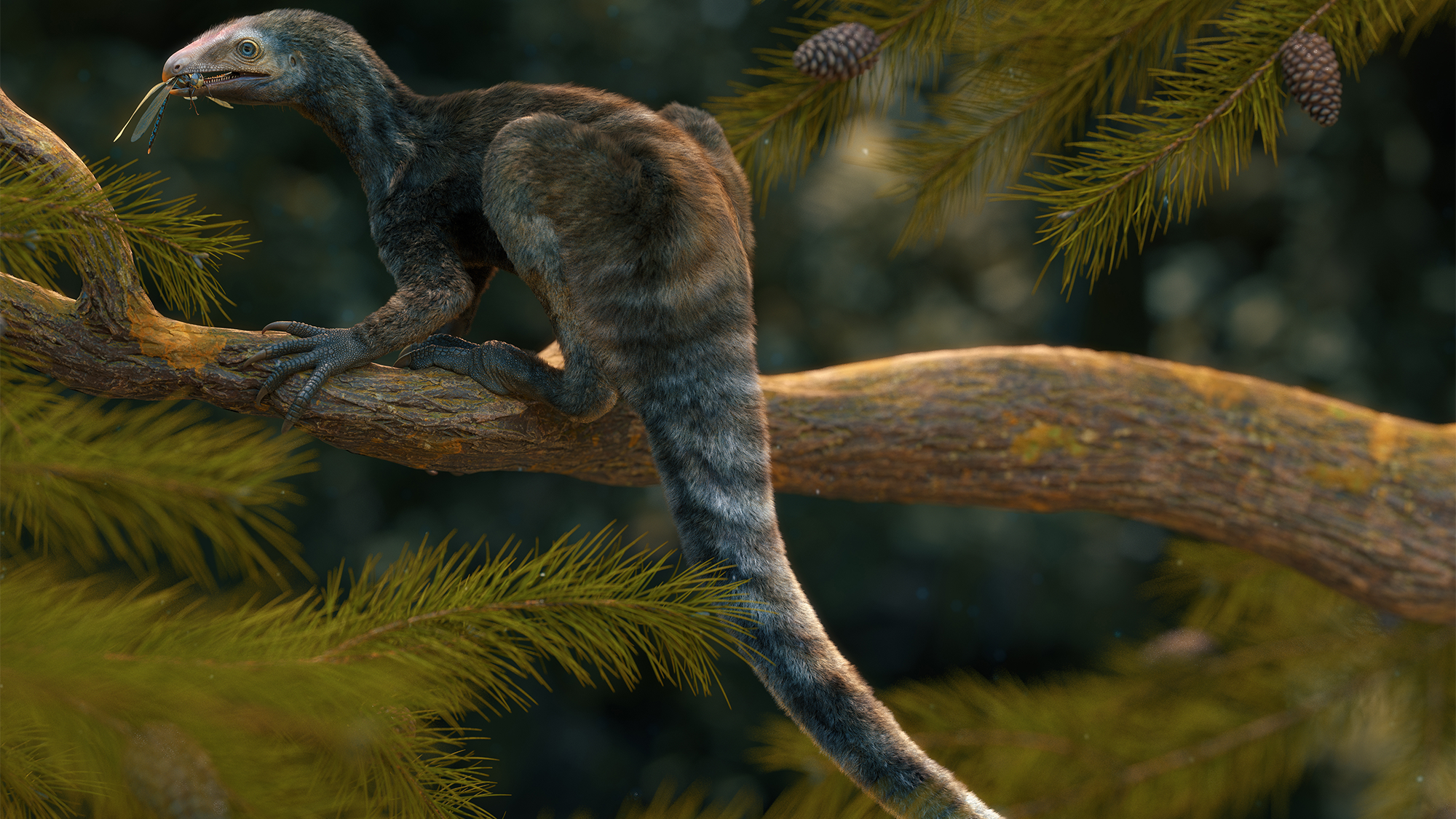

As if the thought of a flying pterosaur with a 6.5 foot wingspan dominating Earth’s skies wasn’t terrifying enough, paleontologists have now found an even older pterosaur ancestor with some prominent claws. The latest find might not have its signature wings just yet, but boasts a beak and sharp claws. The roughly 230-million-year-old lagerpetid unearthed in Brazil is described in a study published on August 16 in the journal Nature.
[Related: This pterosaur ancestor was a tiny, flightless dog-like dinosaur.]
Pterosaurs and dinosaurs both evolved about 235 million years ago in the Middle to early Late Triassic (about 235 million years ago). Dinosaurs went on to dominate the land during the Jurassic Period (201.3 to 145 million years ago) and the winged pterosaurs took over the skies during the Cretaceous Period (145.5 to 66 million years ago).
While some new discoveries including finding Scleromochlus taylori in 2022 have filled in evolutionary gaps and helped paleontologists learn more about these winged critters, the fossil record from this time still remains relatively scarce. Lagerpetids like this newly discovered clawed specimen are the closest known non-flying group to pterosaurs.
In this new study, a team describes the well-preserved partial skeleton of a lagerpetid that they named Venetoraptor gassenae. The team estimates that V. gassenae would have been about 27.5 inches tall and about 39 inches long. The bone features indicate that this particular animal was an adult when it died. It also had feather-like fur on its body and a long tail.
“Because cranial remains are so scarce for lagerpetids, this is the first reliable look into the face of these enigmatic reptiles,” study co-author and paleontologist Brazil’s Universidade Federal de Santa Maria Rodrigo Müller told Gizmodo. “The unusual skeleton of Venetoraptor gassenae reveals a completely new morphotype of pterosaur precursors.”

V. gassenae’s more notable features include a raptorial-like beak and large hands with claws that resemble a curved sword. The team believes that the Veneraprot was highly specialized to its ecological niche. Its claws may have helped it climb or handle its prey, and V. gassenae also has an elongated fourth digit on its fossilized right hand. According to Müller, this has not been seen in other lagerpetids, which hints that V. gassenae is especially closely related to pterosaurs.
[Related: Dinosaur Cove reveals a petite pterosaur species.]
“This elongated fourth digit supports the wings in pterosaurs, so V. gassenae may represent the transition of lagerpetids towards pterosaurs,” Müller told LiveScience.
It’s unclear what role that its long beak played. Beaks obviously can help animals eat, but they can also have many functions beyond feeding, including sexual displays, vocalization, and regulating body temperature.
By studying this fossil alongside the remains from 18 dinosaur and 10 pterosaur species from this time period, the team believes that lagerpetids were as morphologically diverse as Triassic pterosaurs and even more morphologically diverse than Triassic dinosaurs. It shows that this level of biodiversity was already starting to flourish in the precursors of both dinosaurs and pterosaurs and was not something that only emerged after both groups originated.
